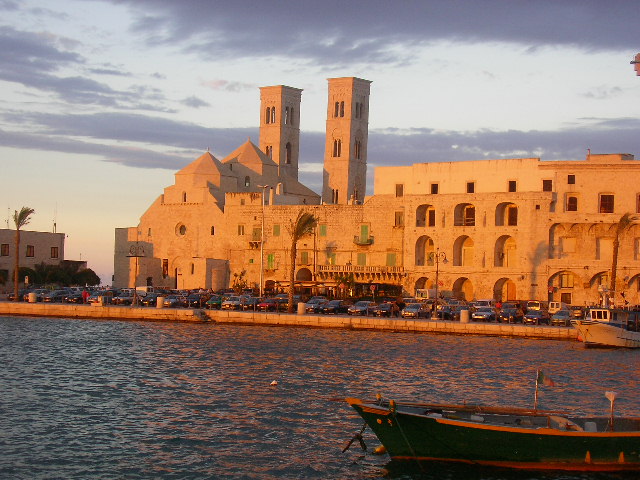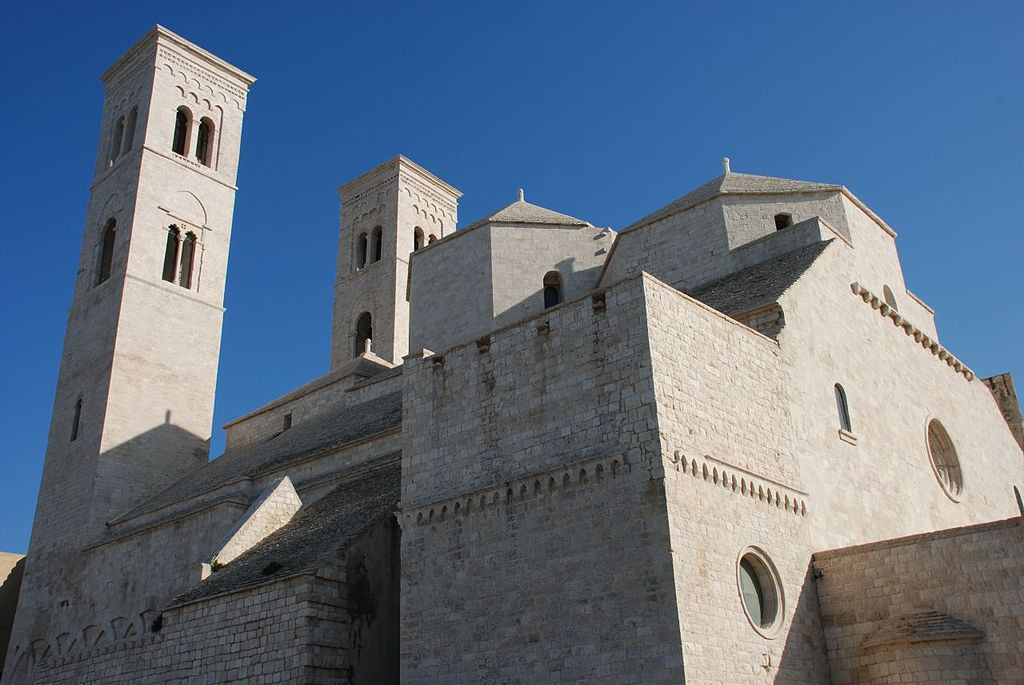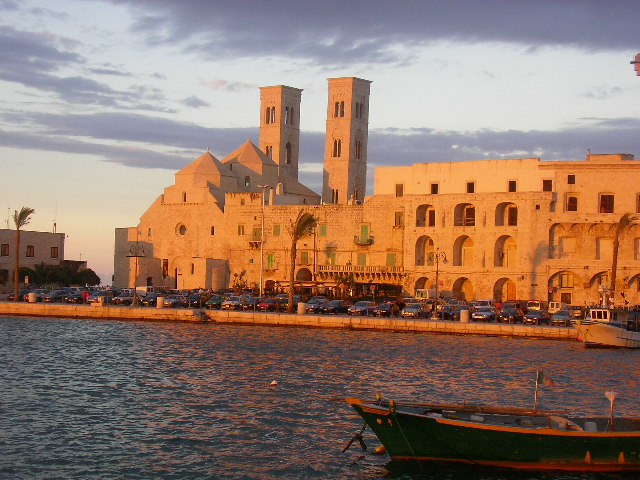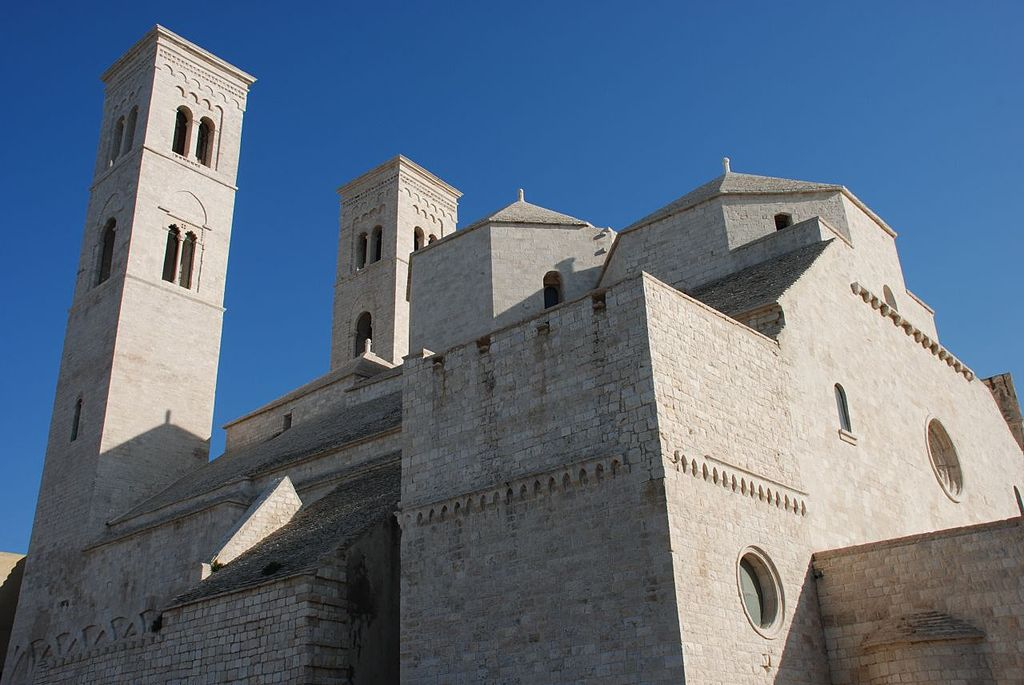
Duomo Di Molfetta

Molfetta, Duomo di San Corrado -pubblico dominio-
La chiesa, costruita ai margini della città vecchia per ospitare le spoglie di San Corrado, morto in Puglia nel 1154, si erge a ridosso della scenografica banchina del porto, come punto di riferimento per coloro che giungevano in Puglia dal mare.
Non si sa con esattezza la data della sua fondazione, probabilmente collocabile sul finire del XII secolo. L’edificio sacro riassume, nella sua struttura dall’aspetto unitario, modelli architettonici e decorativi diversi: l’impianto longitudinale a cupole in asse, molto diffuso in regione, si combina felicemente con un linguaggio transalpino, di matrice normanna, come quello adottato nella Basilica di San Nicola di Bari. Il blocco compatto del prospetto esterno è dominato dalle possenti torri campanarie laterali, alleggerite dal gioco delle bifore che sembrano attraversate dall’azzurro del cielo.
Le cupole in asse nel Duomo di Molfetta, all’esterno nascoste da coperture piramidali, realizzate in pietra locale con la tecnica delle chiacarelle, si impongono per la loro monumentalità e per gli incantevoli effetti di luce, creati da questi grandi prismi bianchi che si animano grazie ai riflessi del cielo e del mare.

Molfetta, Duomo di San Corrado, prospetto laterale. (foto di Dantes102 – Flickr, CC BY-SA 2.0, https://commons.wikimedia.org/w/index.php?curid=4744135)
Le pareti laterali sono movimentate dal rincorrersi di archi ciechi intrecciati di gusto orientale, che testimoniano gli ininterrotti rapporti della città di Molfetta con l’Oltremare.
All’interno, dove convivono armonicamente elementi bizantini, romanici e musulmani, si ha l’impressione di essere catturati entro lo spazio curvilineo della profonda abside, delle cupole emisferiche sovrastanti e delle volte, che sembrano dilatare i muri laterali creando una sinfonia di volumi che si intersecano e si rispondono.

